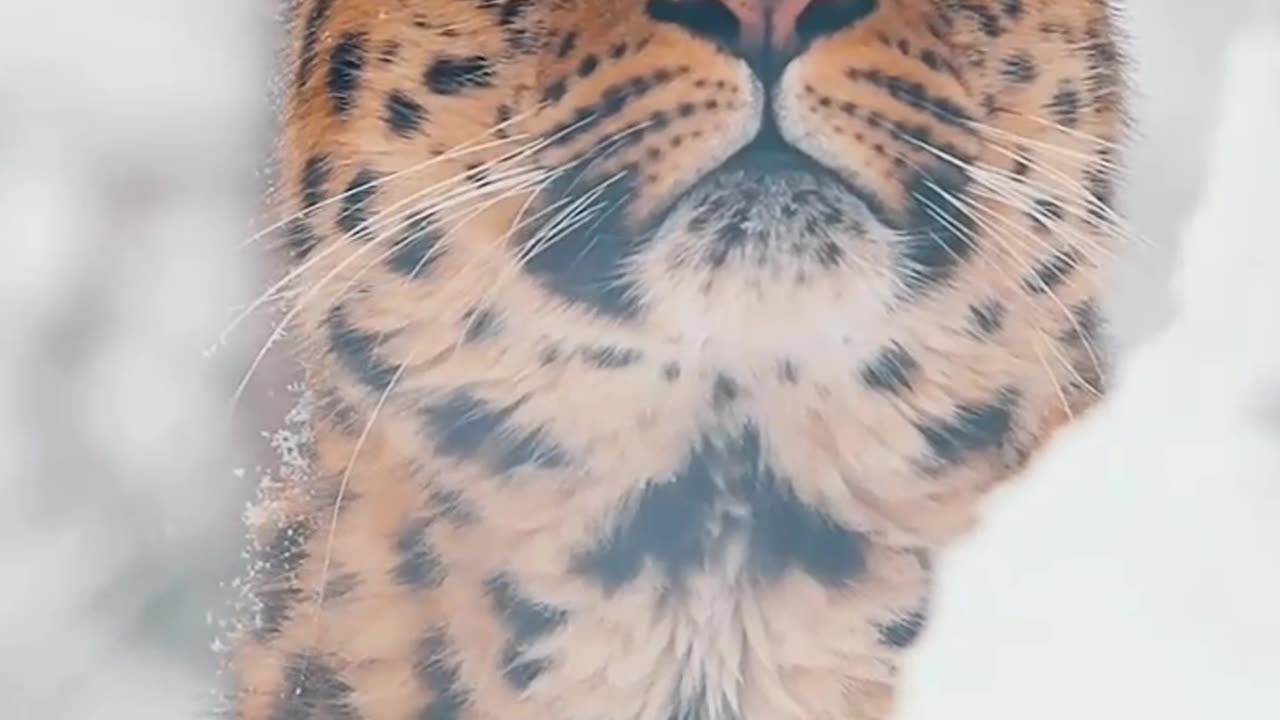Premium Only Content

Snow leopard
The snow leopard (Panthera uncia) is a large wild cat native to the mountainous regions of Central and South Asia. It is well-adapted to the harsh and rugged terrain of its habitat, which includes the Himalayas, the Karakoram range, and the mountains of Central Asia. The snow leopard is also known by several other names, including the ounce, irbis, and snow panther.
Appearance-wise, the snow leopard is one of the most beautiful big cats, with its thick, soft, and silvery-grey fur marked with black spots and rosettes that provide excellent camouflage in its rocky habitat. The snow leopard's coat is thick, which helps it withstand the cold temperatures of its environment. Snow leopards have powerful legs and large paws that allow them to move effortlessly through deep snow and climb steep cliffs with ease. Their long, bushy tails are used for balance and can be wrapped around their bodies to keep them warm.
Snow leopards are solitary and elusive creatures, and they are primarily active at dawn and dusk. They are also highly territorial and mark their territories with urine, feces, and scrapes. Despite their solitary nature, snow leopards are not completely solitary animals and have been known to socialize with other snow leopards in certain circumstances, such as during mating season.
Snow leopards are carnivorous and primarily feed on wild sheep, ibex, and other mountain ungulates. They also occasionally prey on smaller mammals like marmots and pikas. Snow leopards are well adapted to hunting in their mountainous habitat and can take down prey that is much larger than themselves.
The snow leopard is considered to be a vulnerable species, with an estimated population of only 4,000-6,500 individuals remaining in the wild. The main threats to their survival are habitat loss, poaching, and climate change. Several conservation efforts are underway to protect the snow leopard, including the establishment of protected areas and anti-poaching measures. Efforts to reduce human-wildlife conflicts and promote sustainable livelihoods for local communities are also essential for the conservation of this magnificent and iconic big cat.
-
 LIVE
LIVE
Illyes Jr Gaming
5 hours agoIt's Wednesday! Let's Hit 300 Followers TONIGHT!
192 watching -
 LIVE
LIVE
Joker Effect
2 hours agoIs our government safe?***Streamer News***DRAMA***RUMBLE GETTING LEVERAGE***GAMING
679 watching -
 14:55
14:55
T-SPLY
7 hours agoDemocrats Accused Of Not Calling Out Joe Bidens Security Disasters
19.4K8 -
 LIVE
LIVE
ZachTheRipper
2 hours agoWe Back With A Passion - 0/20 Subs - Interactive Streamer - #RumbleGaming
185 watching -
 16:19
16:19
Tundra Tactical
6 hours ago $0.08 earnedGEN Z Brit 3D Prints a WORKING Gun!
18K8 -
 48:01
48:01
Man in America
10 hours agoWHEN WILL THE ARRESTS BEGIN?! w/ General Michael Flynn
25.6K22 -
 LIVE
LIVE
BSparksGaming
3 hours agoNear the End? Assassin's Creed Shadows Campaign
95 watching -
 LIVE
LIVE
I_Came_With_Fire_Podcast
10 hours agoSIGNAL SNAFU | SODA-GATE | JUDGE STUPIDITY
147 watching -
 1:46:34
1:46:34
Glenn Greenwald
6 hours agoThe Truth & Lies About the Atlantic's Signal Controversy; EU Already Failing to Back Up its Militaristic Rhetoric; Appeals Court Rules Against Trump DOJ in El Salvador Case | SYSTEM UPDATE #429
126K105 -
 2:57:37
2:57:37
nickelsYT
5 hours ago🔴LIVE The Finals WT Grind /Ranked.....Pew Pew
14.8K